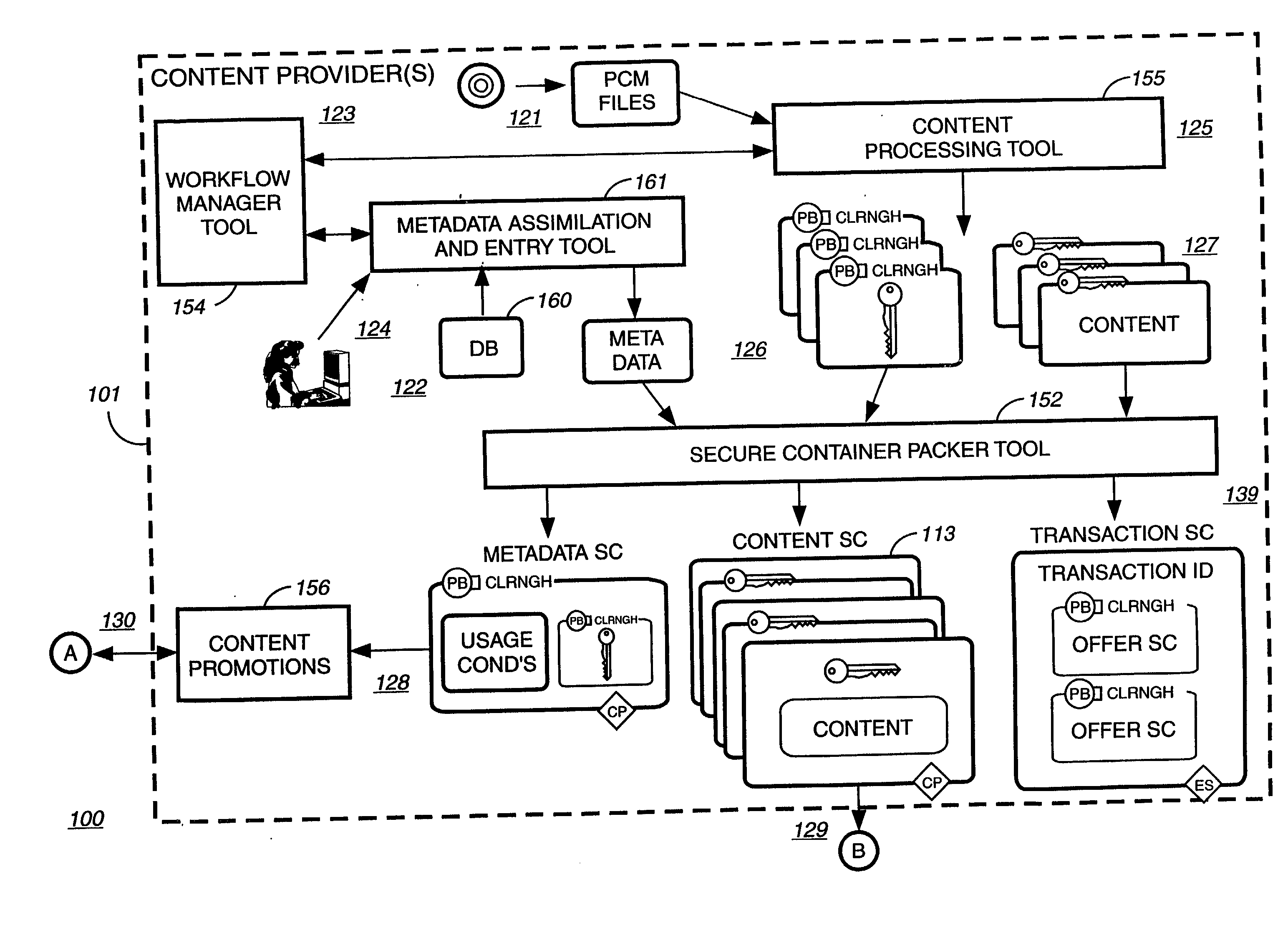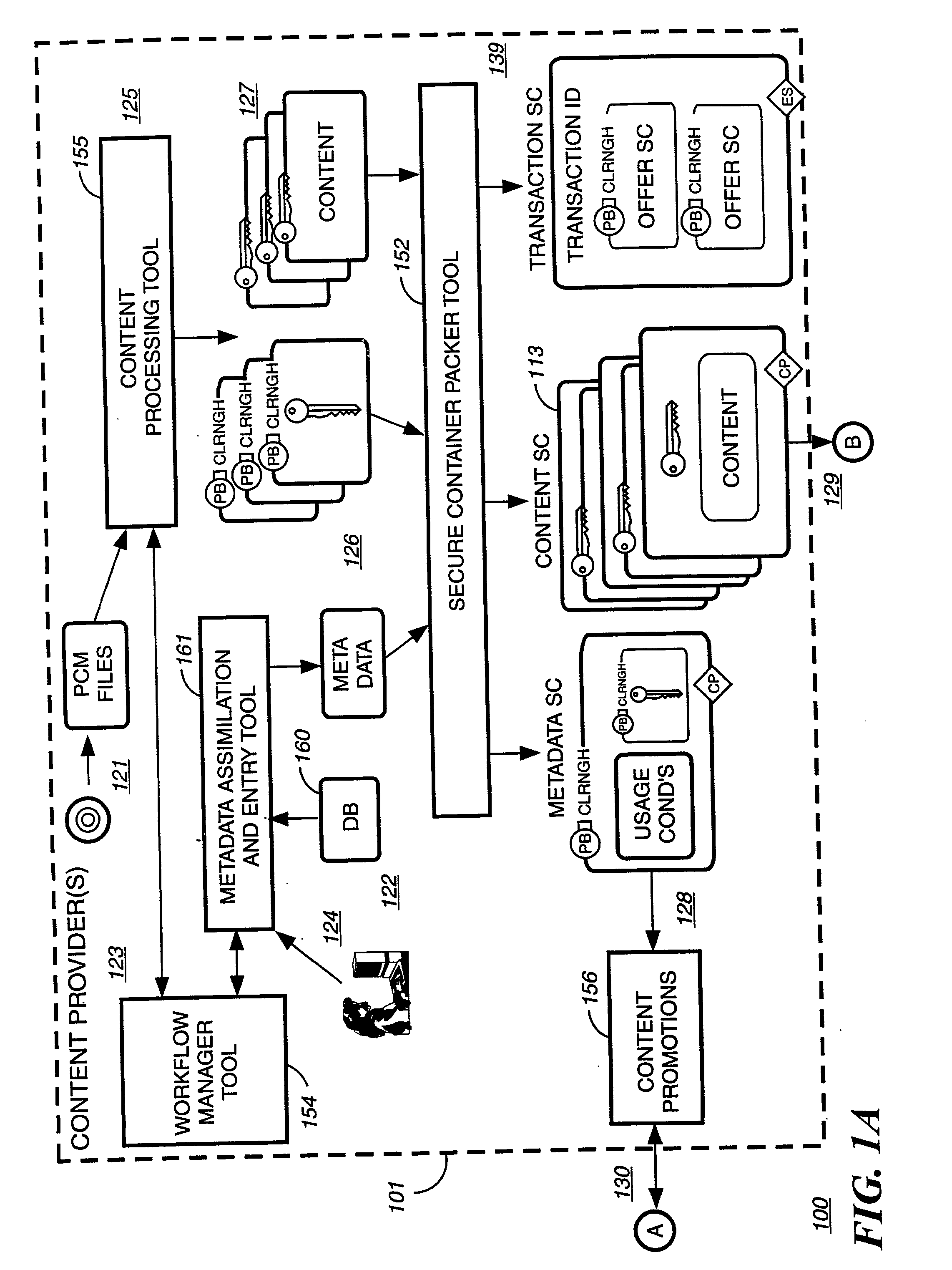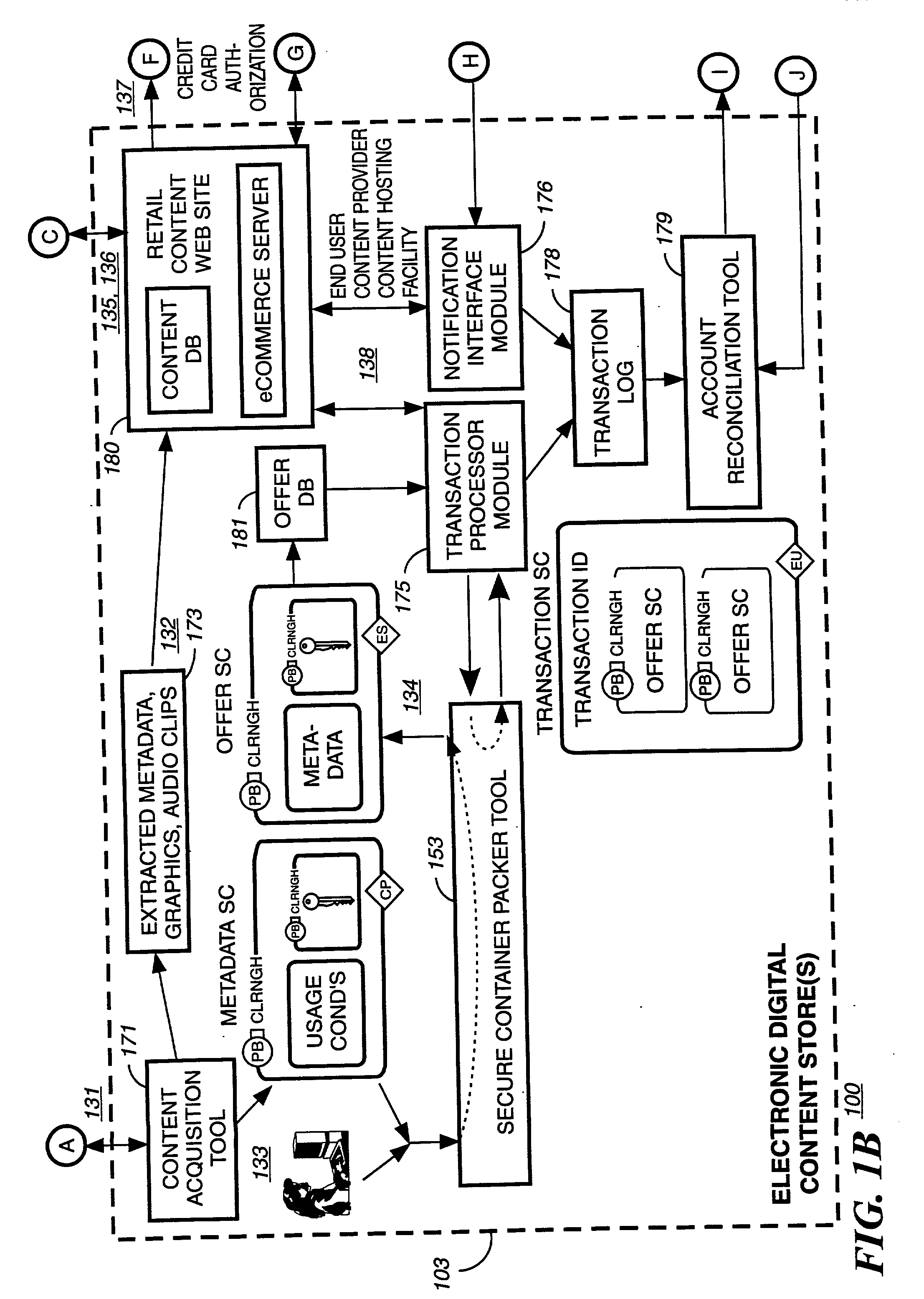Digital content distribution using web broadcasting services
a digital content and web broadcasting technology, applied in the field of electronic commerce, can solve the problems of unauthorized re-distribution of digital content by end-users, owners and publishers of valuable digital content are slow to embrace the use of the internet for digital content distribution, and digital content is readily available to the end-user for unauthorized re-distribution
- Summary
- Abstract
- Description
- Claims
- Application Information
AI Technical Summary
Problems solved by technology
Method used
Image
Examples
embodiment
[0160] 1. Multi-Tier Digital TV Embodiment
[0161] 2. Web broadcasting Over Separate Channels Embodiment
[0162] I. Secure Digital Content Electronic Distribution System
[0163] A. System Overview
[0164] The Secure Digital Content Electronic Distribution System is a technical platform that encompasses the technology, specifications, tools, and software needed for the secure delivery and rights management of Digital Content and digital content-related content to an end-user, client device. The End-User Device(s) include PCS, set top boxes (IRDs), and Internet appliances. These devices may copy the content to external media or portable, consumer devices as permitted by the content proprietors. The term Digital Content or simply Content, refers to information and data stored in a digital format including: pictures, movies, videos, music, programs, multimedia and games.
[0165] The technical platform specifies how Digital Content is prepared, securely distributed through point-to-point and broad...
PUM
 Login to View More
Login to View More Abstract
Description
Claims
Application Information
 Login to View More
Login to View More - R&D
- Intellectual Property
- Life Sciences
- Materials
- Tech Scout
- Unparalleled Data Quality
- Higher Quality Content
- 60% Fewer Hallucinations
Browse by: Latest US Patents, China's latest patents, Technical Efficacy Thesaurus, Application Domain, Technology Topic, Popular Technical Reports.
© 2025 PatSnap. All rights reserved.Legal|Privacy policy|Modern Slavery Act Transparency Statement|Sitemap|About US| Contact US: help@patsnap.com



